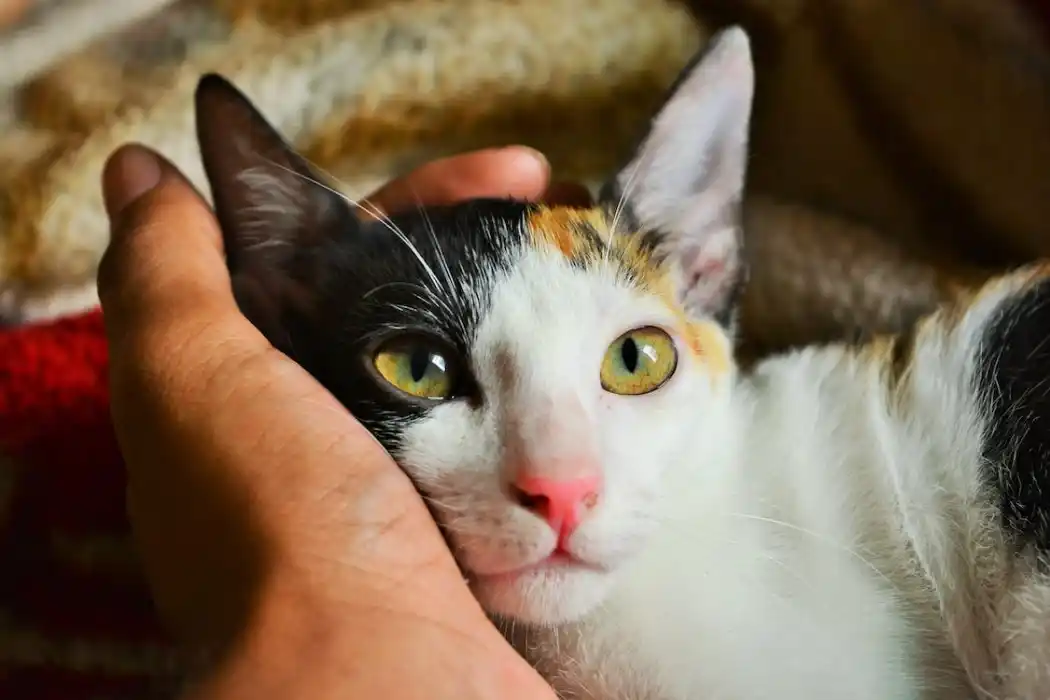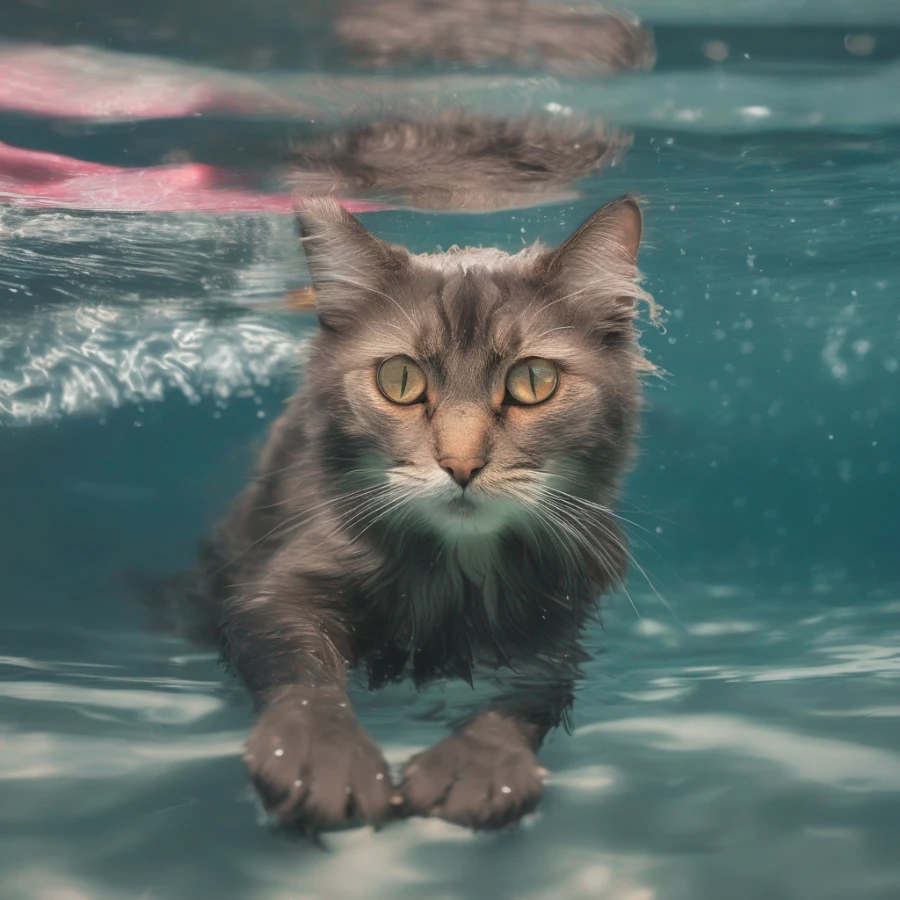Anemia in Cats: Diagnosis, Causes, Symptoms & Treatment
Anemia in cats is a condition where there is a decrease in the number of red blood cells or a decrease in the amount of hemoglobin, which can lead to symptoms such as weakness, pale gums, lethargy, decreased appetite, and increased respiratory rate.

What is an Anemia
Anemia in cats is a medical condition in which there is a reduced number of red blood cells or a decrease in the amount of hemoglobin, the oxygen-carrying protein, in the bloodstream. Red blood cells and hemoglobin are crucial for delivering oxygen to tissues throughout the body. When anemia occurs, the oxygen-carrying capacity of the blood is compromised, leading to various symptoms and potential complications.
Anemia in cats can have multiple underlying causes. One common cause is blood loss, which can result from trauma, internal bleeding, parasitic infestations (such as fleas or ticks), gastrointestinal ulcers, or certain diseases. Another cause is a decrease in the production of red blood cells, which can be due to bone marrow disorders, nutritional deficiencies (such as iron, vitamin B12, or folic acid), or certain infections. Additionally, anemia can occur when there is an increased destruction of red blood cells, either due to immune-mediated hemolytic anemia or certain infections.
The symptoms of anemia in cats can vary depending on the underlying cause and the severity of the condition. Cats with anemia may exhibit weakness, lethargy, pale gums and mucous membranes, reduced appetite, weight loss, rapid or labored breathing, exercise intolerance, increased heart rate, and, in severe cases, jaundice (yellowing of the skin and eyes).
Diagnosing anemia in cats involves a comprehensive physical examination, blood tests to assess red blood cell counts and hemoglobin levels, and additional tests to determine the underlying cause. Treatment of anemia will depend on the specific cause identified. It may involve addressing any underlying diseases or conditions contributing to the anemia, administering blood transfusions in severe cases, and providing supportive care to improve the overall health and well-being of the cat.
If you suspect your cat may be anemic, it is important to seek veterinary attention promptly. Untreated or severe anemia can lead to serious complications and even be life-threatening. Early diagnosis and appropriate treatment are crucial for managing anemia in cats and improving their health and quality of life.
Cat Anemia Symptoms
The symptoms of anemia in cats can vary depending on the underlying cause and the severity of the condition. Common symptoms of anemia include:
Weakness: Cats with anemia may appear weak and have reduced energy levels. They may be less active than usual and tire easily.
Pale gums and mucous membranes: Anemic cats often have pale or white gums, as well as pale inner eyelids and tongue. Normally, these tissues should be pink in color.
Lethargy: Anemic cats may be less responsive and show signs of lethargy. They may seem uninterested in their surroundings and have a reduced appetite.
Reduced appetite and weight loss: Cats with anemia may experience a decreased appetite, resulting in weight loss over time. They may show less interest in food or have difficulty eating.
Rapid or labored breathing: Anemic cats may have an increased respiratory rate or exhibit difficulty breathing. They may pant or have shallow, rapid breaths.
Increased heart rate: Anemia can cause the heart to work harder to compensate for the decreased oxygen-carrying capacity of the blood. This can lead to an increased heart rate.
Exercise intolerance: Cats with anemia may have difficulty engaging in physical activities. They may tire quickly or become easily exhausted.
Jaundice (in severe cases): In some instances, anemia can be accompanied by jaundice, which is characterized by a yellowing of the skin, whites of the eyes, and other mucous membranes.
It's important to note that these symptoms are not exclusive to anemia and can also be associated with other health conditions. If you notice any of these symptoms in your cat, it's advisable to consult with a veterinarian for a proper diagnosis and appropriate treatment.
Causes of Anemia in Cats: Understanding the Triggers of Feline Health Issues
Anemia in cats can have various underlying causes. Some common causes of anemia include:
Blood loss: External or internal bleeding can lead to anemia. Causes of blood loss in cats include trauma, injuries, surgeries, parasitic infestations (such as fleas or ticks), and certain diseases that affect the blood vessels or organs.
Decreased red blood cell production: Anemia can occur when there is a decrease in the production of red blood cells. This can be due to bone marrow disorders, such as leukemia or myelodysplasia, which affect the ability of the bone marrow to produce an adequate number of healthy red blood cells. Nutritional deficiencies, particularly deficiencies in iron, vitamin B12, or folic acid, can also impair red blood cell production.
Increased red blood cell destruction: Anemia can result from an increased destruction of red blood cells, a condition known as hemolysis. This can be caused by immune-mediated hemolytic anemia, where the cat's immune system mistakenly attacks and destroys its own red blood cells. Certain infections, such as feline infectious anemia (caused by Mycoplasma haemofelis), can also lead to increased red blood cell destruction.
Chronic diseases and conditions: Some chronic diseases and conditions, such as chronic kidney disease, cancer, inflammatory bowel disease, and certain autoimmune disorders, can contribute to the development of anemia in cats.
Toxins and medications: Certain toxins, such as ingesting certain plants or chemicals, can cause damage to the bone marrow and lead to anemia. Additionally, some medications, such as certain antibiotics or chemotherapy drugs, may have an adverse effect on red blood cell production or survival.
It's important to determine the underlying cause of anemia in cats as treatment options and prognosis can vary depending on the specific cause. If you suspect your cat is anemic, it's essential to consult with a veterinarian for a thorough examination and diagnostic testing to identify the root cause of the anemia.
Diagnosis of Anemia in Cats: Identifying Feline Health Conditions
The diagnosis of anemia in cats typically involves a combination of physical examination, medical history review, and diagnostic tests. Here are some common diagnostic methods used to diagnose anemia in cats:
Complete Blood Count (CBC): A CBC is a blood test that provides information about the number of red blood cells, white blood cells, and platelets in the bloodstream. It helps to determine if the cat has a decreased number of red blood cells, which is indicative of anemia.
Blood Smear: A blood smear involves examining a sample of the cat's blood under a microscope. It allows the veterinarian to evaluate the size, shape, and appearance of the red blood cells. Abnormalities in the red blood cells can provide clues about the underlying cause of anemia.
Biochemical Profile: A biochemical profile is a blood test that evaluates the overall health of the cat's organs, including the kidneys and liver. It can help identify any underlying diseases or conditions that may be contributing to the anemia.
Feline Leukemia Virus (FeLV) and Feline Immunodeficiency Virus (FIV) Testing: These tests are often performed to check for viral infections that can cause anemia in cats.
Bone Marrow Aspiration or Biopsy: In some cases, a bone marrow aspiration or biopsy may be necessary to evaluate the bone marrow's ability to produce red blood cells. This procedure involves collecting a sample of bone marrow for examination under a microscope.
Additional Tests: Depending on the suspected cause of anemia, additional tests may be recommended. These can include tests for infectious diseases, tick-borne illnesses, nutritional deficiencies, autoimmune disorders, or other specific conditions.
The specific diagnostic approach will depend on the cat's symptoms, medical history, and the veterinarian's assessment. It's crucial to consult with a veterinarian if you suspect your cat has anemia as prompt diagnosis and treatment are essential to address the underlying cause and improve the cat's well-being.
Treatment of Anemia in Cats: Managing Feline Health Conditions
The treatment of anemia in cats depends on the underlying cause and severity of the condition. Here are some common treatment approaches for anemia in cats:
Addressing the Underlying Cause: The primary focus of treatment is to identify and address the underlying cause of anemia. This may involve treating concurrent diseases, such as infections, parasites, or chronic illnesses.
Blood Transfusion: In severe cases of anemia or when the cat's red blood cell count is critically low, a blood transfusion may be necessary. This involves administering donated blood or packed red blood cells to replenish the cat's red blood cell count.
Medications: Depending on the cause of anemia, medications may be prescribed to manage underlying conditions. For example, if anemia is due to kidney disease, medications to support kidney function may be prescribed.
Nutritional Support: A balanced and nutritious diet is essential for the production of healthy red blood cells. In some cases, dietary changes or supplements may be recommended to support the cat's overall health and aid in red blood cell production.
Iron Supplementation: Iron supplements may be prescribed in cases of iron-deficiency anemia. However, it's important to note that iron supplementation should only be given under veterinary guidance, as excess iron can be toxic to cats.
Supportive Care: Providing supportive care is crucial for cats with anemia. This includes ensuring they have a comfortable and stress-free environment, monitoring their hydration levels, and providing any necessary pain relief.
It's important to consult with a veterinarian for an accurate diagnosis and appropriate treatment plan for your cat's specific situation. They will be able to determine the underlying cause of anemia and develop a tailored treatment approach to address it effectively. Regular follow-up appointments may be necessary to monitor the cat's progress and adjust the treatment as needed.
Prevention of Anemia in Cats: Promoting Feline Health and Well-being
While it may not be possible to prevent all cases of anemia in cats, there are steps you can take to reduce the risk and promote your cat's overall health. Here are some prevention measures for anemia in cats:
Regular Veterinary Care: Schedule routine check-ups with your veterinarian to monitor your cat's overall health and detect any potential issues early on. Regular blood tests can help identify anemia or underlying conditions that may contribute to anemia.
Proper Nutrition: Feed your cat a balanced and nutritious diet that meets their specific dietary needs. Ensure the diet includes essential nutrients, vitamins, and minerals necessary for the production of healthy red blood cells.
Parasite Prevention: Keep your cat protected against external and internal parasites, such as fleas, ticks, and intestinal worms. Follow your veterinarian's recommendations for year-round parasite prevention to reduce the risk of blood loss or parasitic-related anemia.
Vaccinations: Stay up-to-date with your cat's vaccinations to prevent certain infectious diseases that can lead to anemia, such as feline leukemia virus (FeLV) and feline immunodeficiency virus (FIV).
Prevent Accidents and Injuries: Take steps to minimize the risk of accidents or injuries that can result in blood loss. Keep your cat indoors or provide a safe and supervised outdoor environment to reduce the chances of traumatic injuries.
Dental Care: Maintain good dental hygiene for your cat to prevent oral infections and gum disease, which can contribute to anemia. Regular tooth brushing and dental cleanings may be necessary.
Environmental Safety: Create a safe environment for your cat by removing potential hazards that can cause poisoning or injury. Keep harmful substances, such as toxic plants, chemicals, and medications, out of your cat's reach.
Stress Management: Minimize stressors in your cat's environment as much as possible. Stress can weaken the immune system and make cats more susceptible to illness, including anemia.
Prompt Veterinary Care: If you notice any changes in your cat's behavior, appetite, or overall health, seek veterinary attention promptly. Early detection and treatment of underlying conditions can help prevent the development of anemia.
Remember to consult with your veterinarian for personalized advice on preventive measures specific to your cat's health needs. They can provide guidance on the best practices and recommend appropriate preventive strategies to keep your cat healthy and reduce the risk of anemia.



